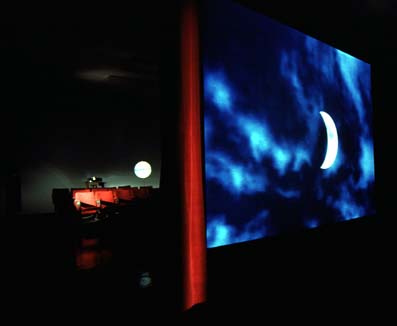 No
solid body is lighter than its image. No
solid body is lighter than its image.Start
with a premise that an electronical image is part of a
physical world.
Establish a direct
relationship between electronical image and physical
substance -materia in order to produce a laboratory
scaled event which is simultaneously a “story”
and physical reality. Measure how much the physical
presence of the object affects the narrative, and how
much the narrative affects the object.
Statement by
the artist:
“Observatorium
comprises
a cycle of works inspired by the notion that electronic
image is a part of the physical world. The physical and
the metaphysical, the spatial and the narrative, the
natural and the artificial – all these ideas are not
contradictions; rather, they are coexistent elements of
one and the same real world. Contrary to my previous
exhibitions, which were mostly collections of works
created at different times and for different occasions, Observatorium
presents new works created for this particular occasion.
(For the exhibition at the Modern Gallery of Rijeka,
February/March 1997).
The
driving concept behind it all was to bring into direct
relation the electronic image and physical
substance– “matter” or “physical
process”– in order to produce an event that
could be measured in laboratory terms; something that is
both a “story” and a physical reality. There
are times when the physical presence of an object
influences the manner in which a story is told. At other
times, the narrative has an influence upon the condition
of the physical object. This inter-relation itself then
influences (we hope) our perception of both.
Dalibor
Martinis
(Croatia)
|